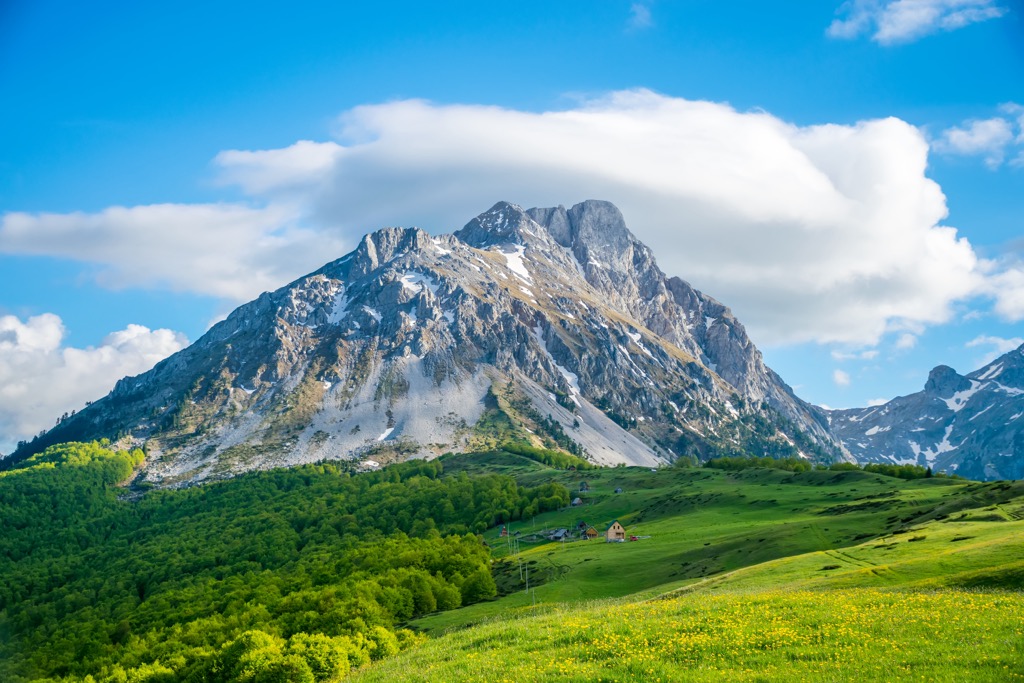Get PeakVisor App
Sign In
Search by GPS coordinates
- Latitude
- ° ' ''
- Longitude
- ° ' ''
- Units of Length

Yes
Cancel
Share ×

Scan the QR code and open PeakVisor on your phone
❤ Wishlist ×
Choose
Delete
Nature Park Komovi was named after the Komovi mountain massif, which is one of the most impressive mountain massifs of Montenegro and the Dinaric mountain system. It is known for its high mountain peaks and barren rockfaces, offering visitors amazing views and untouched nature. The highest and most prominent peak of Nature Park Komovi is Kom Kučki (2,487 m/ 1,132 ft).
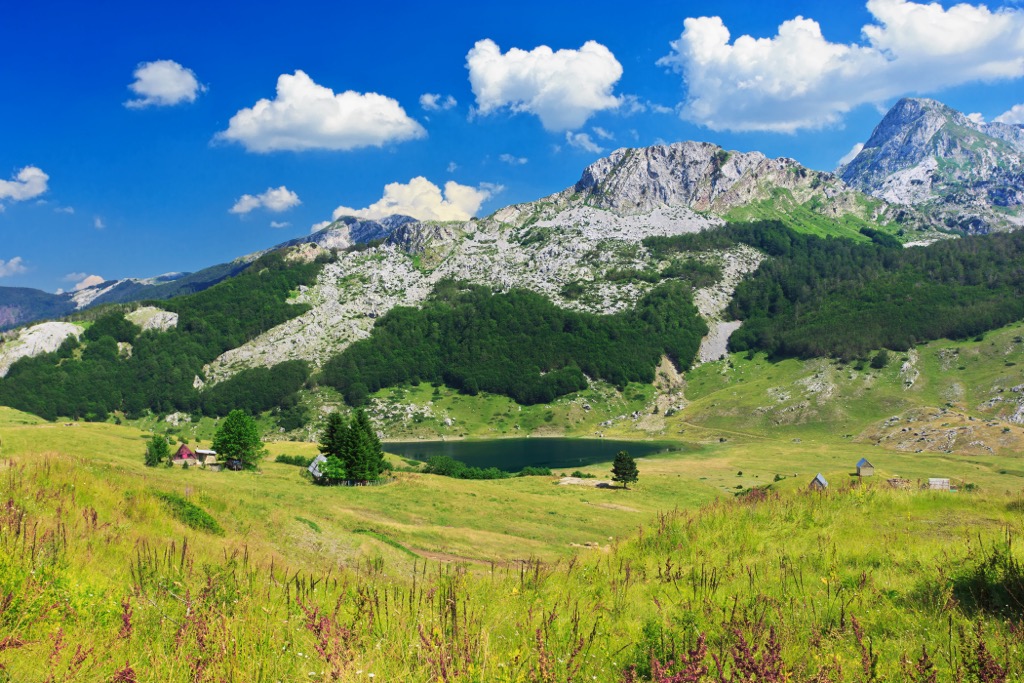
Montenegro, in addition to the Adriatic Sea, offers amazing mountains and deep canyons. Most people don’t know that this country is characterized by a large number of mountains, among which Komovi, high mountain peaks, have a special place. The contrast between the sea and the high mountains adds to the uniqueness of Montenegro.
Regional Nature Park Komovi is located in the eastern part of Montenegro. It includes parts of the territory of the capital city of Podgorica and the municipalities of Andrijevica and Kolašina. The dominant and pointed peaks of this massif are a magnet for mountaineers and tourists alike. The rich pastures in untouched nature landscapes have always attracted livestock, so two large Montenegrin tribes settled here with them.
Below the mountains lies the small town of Andrijevica with great tourist potential. It is a small place in the northeast of Montenegro at an altitude of about 680 m (2,230 ft). This is a rural area, surrounded by the KKomovi mountain peaks. The Lim and Zorečica Rivers flow through Andrijevica.
While the most popular parts of this park appear too rugged to use as farmland, the lower elevations are great places to raise livestock. Since Andrijevica is known as a region full of livestock, the goal of the local community is to combine rural tourism with mountain tourism.
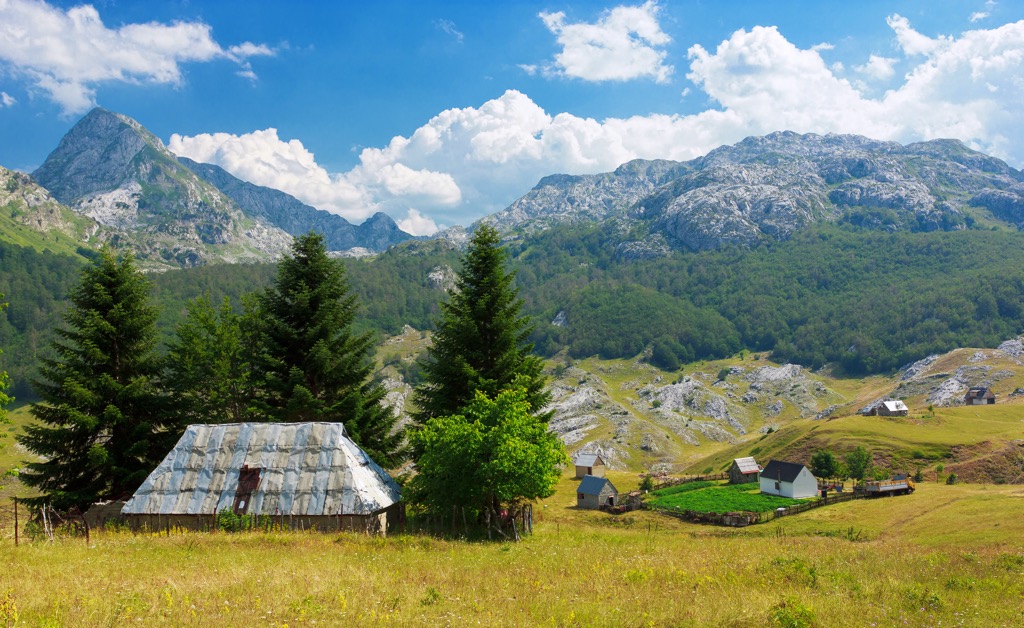
The Prokletije massif with Prokletije National Park and the Bjelasica mountain surround the Komovi natural park from the south, east, and north, respectively. Komovi is surrounded by extensive plains that have an altitude of 1,900 m (6,233 ft). These are the plains that locals use for their livestock.
In the end, we can say that the Komovi mountain massif is one of the most spectacular mountain massifs in Montenegro and the Dinaric Alps. The mountains comprise just one glacial valley, known as Međujomlje, which is surrounded by the plateaus of Štavna, Ljuban, Rogam, Turjak, and Carine, and three mountain peaks. These include Vasojevićki Kom 2,460 m (8,070 ft), Kom Kučki 2,487 m (8,159 ft), and Ljevorecki Kom 2,453 m (8,047 ft).
You can see it all here, due to the distinct altitude zones in the park. They range from river valleys and dense deciduous, mixed, and conifer forests in the lower and middle of the mountain massif, to rich mountain meadows and pastures in the mid-elevations, as well as rocky areas and rockfaces on the very mountain tops.
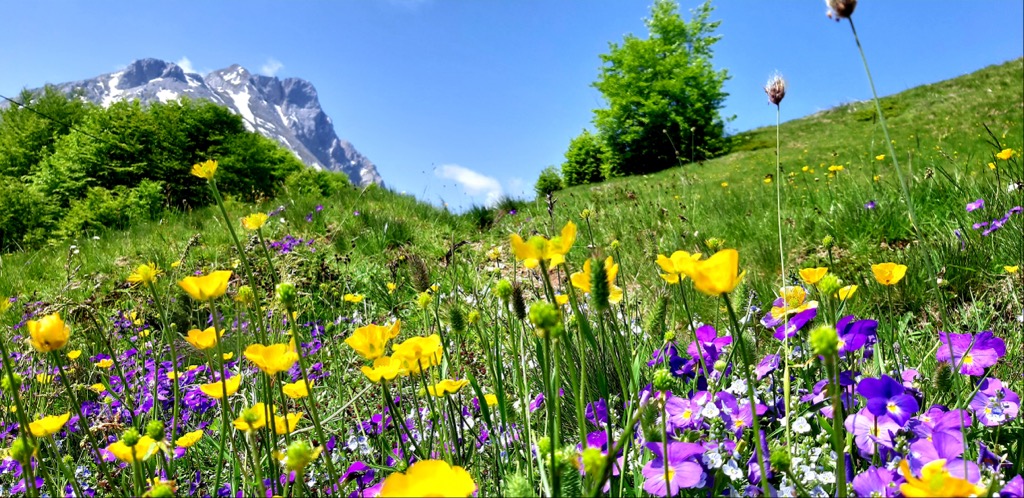
The local geology of Regional Nature Park Komovi is similar to most of the local mountains. The Komovi mountains are near the Prokletije and Bjelasica massifs, making them almost a group. Their most notable geological forms are glacial formations, as is the case for most Montenegrin mountains.
The tectonic processes that affected the area of Komovi caused the uplift of limestone layers and Paleozoic slates. Due to this, Komovi Nature Park was raised to a height of more than 2,400 m (7,874 ft).
The characteristic shape of Komovi, its peaks, ridges, and rocky landscapes were created under the influence of various forces of erosion and the impact of water. While this may not appear due to their size, Komovi are considered a special mountain group because of their unique features.
Komovi belong to the Dinaric Alps, are mainly built of limestone, and have a dominant appearance above the horizon. The mountain is somewhat semi-circular, and its landscape is wild and appears untouched. The limestone hills lie on a broad plain and are quite steep.
Komovi are a chain mountain, raised in the Alpine orogeny, at the same time as the Dinarides. Since they are considered a border mountain, Komovi are not in line with the Dinaric direction, or the northwest-to-southeast orientation most mountain massifs here have.
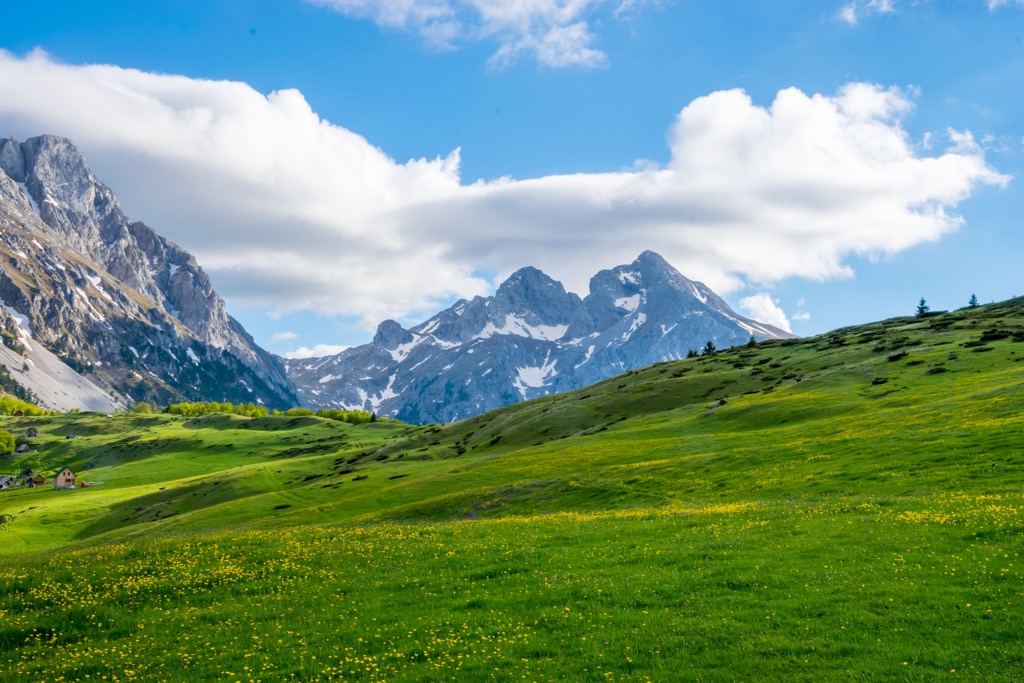
Quaternary Paleozoic and Triassic formations built Nature Park Komovi area. During the Ice Age, there was a large glacier in the central part of the Komovi region, more precisely, in the place of Medjukomlje. This plateau lies under the high peaks, Kučki Kom and Vasojevički Kom, while on the other side is the slope that leads to the Ljubaštica Valley. The bottom of Medjukomlje, due to its structure and location, is heavily influenced by erosion and karstic formations.
Regional Nature Park Komovi's highest and most noticeable peaks include:
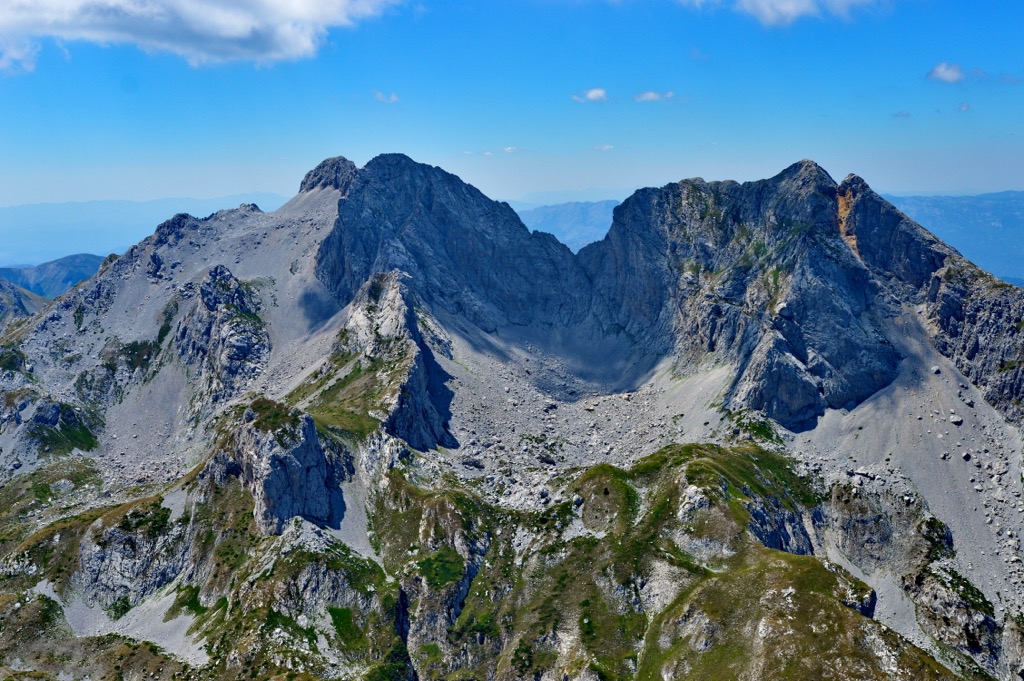
Komovi massif is known for its diverse ecosystem, but human development is not the only thing to thank for that. Climatic factors like temperature and weather, as well as geographical factors such as elevation, caused the flourishing of diverse and rich flora and fauna.
The area of the Komovi Nature Park is characterized by a diversity of flora, which is reflected in the presence of many mountainous, medicinal, endemic, and relict plant species. The rich vegetation consists of mountain buttercups, crossed buttercups, klapakur, cruciferous grass, and other species.
A few of the prettiest flowers of the high mountains grow on Komovi. These include Kerner poppy, Alpine sundew, Orphandis violet, creeping stonewort, pale clover, alpine feverfew, Albanian lily, and many more.
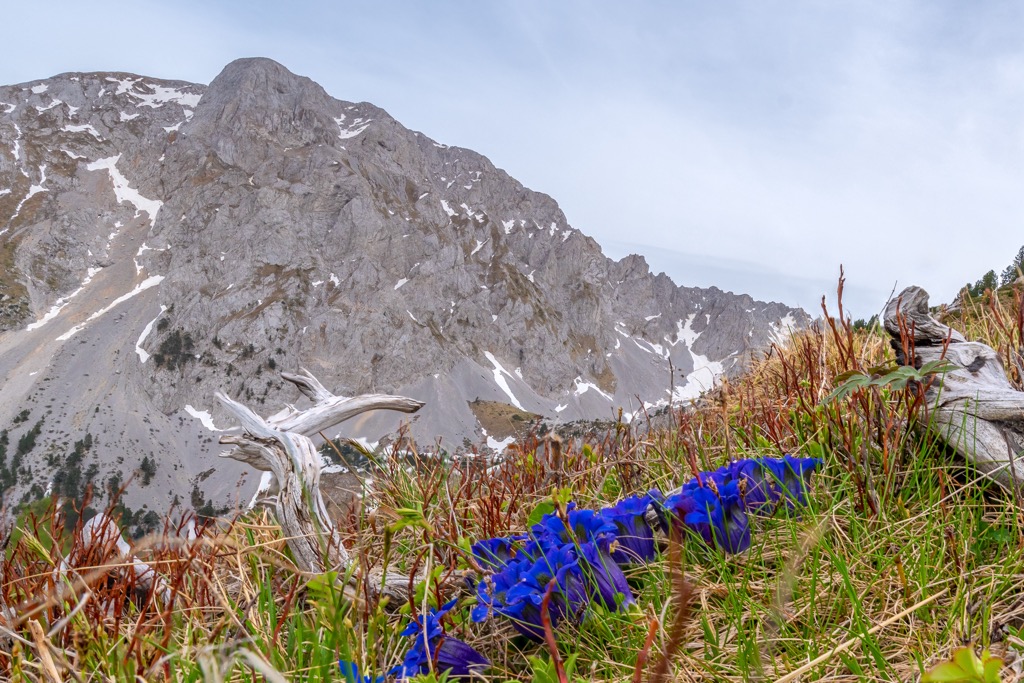
In the high mountain area of Komovi, there is a certain number of local endemics found only in Komovi and nowhere else in the world, like the Pančićeve kandilica.
In the area of today's National Park, there are various types of mosses and mushrooms. A completely new kind of mushroom was found here a few years ago, discovered by mycologist Branislav Perić. It is a mushroom called Alpova komovina.
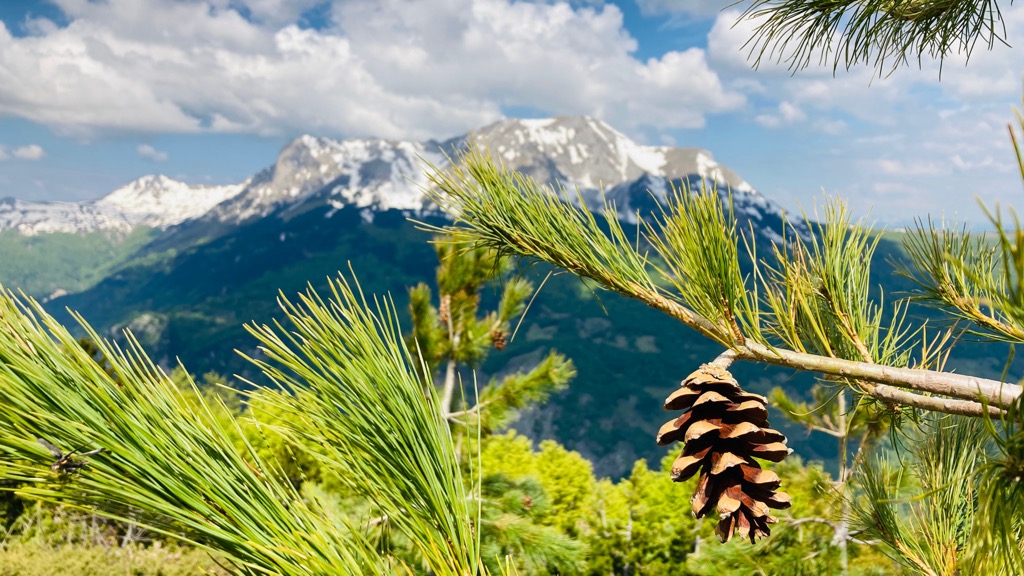
Various species of mammals live in Regional Nature Park Komovi forests, from small rodents such as mice, rabbits, and voles to large animals such as roe deer and wild boar.
Animal species like the gray wolf, brown bear, fox, mink, and weasel are also to be seen. They are active mainly at dusk and at night when they sneak up on smaller mammals, birds, and their eggs, and sometimes they approach human settlements due to food shortages.
It is particularly important to note that there is a large number of birds protected by law here, 27 of them to be exact. Some of them include the golden eagle, which is one of the largest prey hunters.
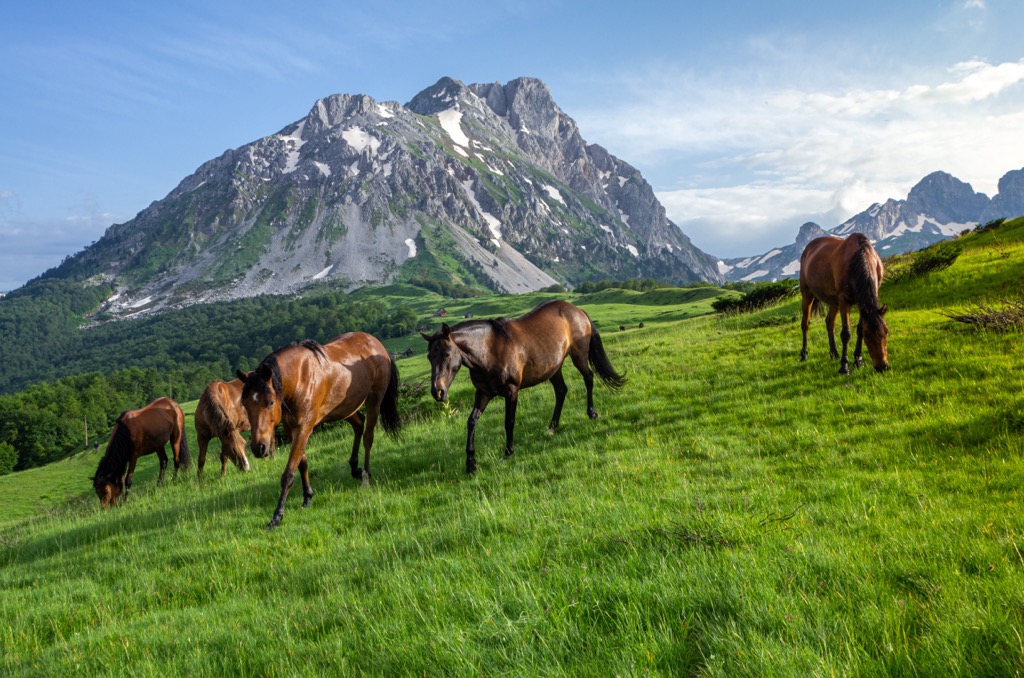
The first human eras like prehistory, antiquity, and medieval times were silent in the Komovi, with only a few herders visiting the pastures every summer. Soon, humans expanded their territory and the first tribes settled.
The rich pastures of this area have always attracted herders, so in the past two significant Montenegrin tribes inhabited Komovi pastures. They were the Vasojevici and Kuci. Two peaks of Komovo are named after them, Kom Vasojevički 2,461m (8,074) and Kom Kučki 2,487 m (8,159 ft).
Although the time of tribal divisions ended a long time ago, some customs still remain from that time. One example of this tradition is related to the Vasojevičko tribe, where every year, they hike to the top of their Kom. That day usually coincides with St. George's Day.
Another interesting thing in the rural area of Komovi is that among the larger group of villages and hamlets, there is a village named Japan. Namely, this name was created during the war between Russia and Japan, in which Montenegro was also present.
According to the myth, the great Montenegrin military leader fought and won a duel with a Japanese officer. After the end of the long war, the hamlet inhabitants named their village after the Land of the rising sun.
Daniel Vincek and his wife Vera Vincek marked the peaks of Komovi more recently, which gives them enormous mountaineering and historical value. Unfortunately, his wife Vera died on top of Vasojevic Kom. As a sign of respect for this legendary mountaineer, a pilgrimage is made to Komovi every year, attended by mountaineers from all over Montenegro.
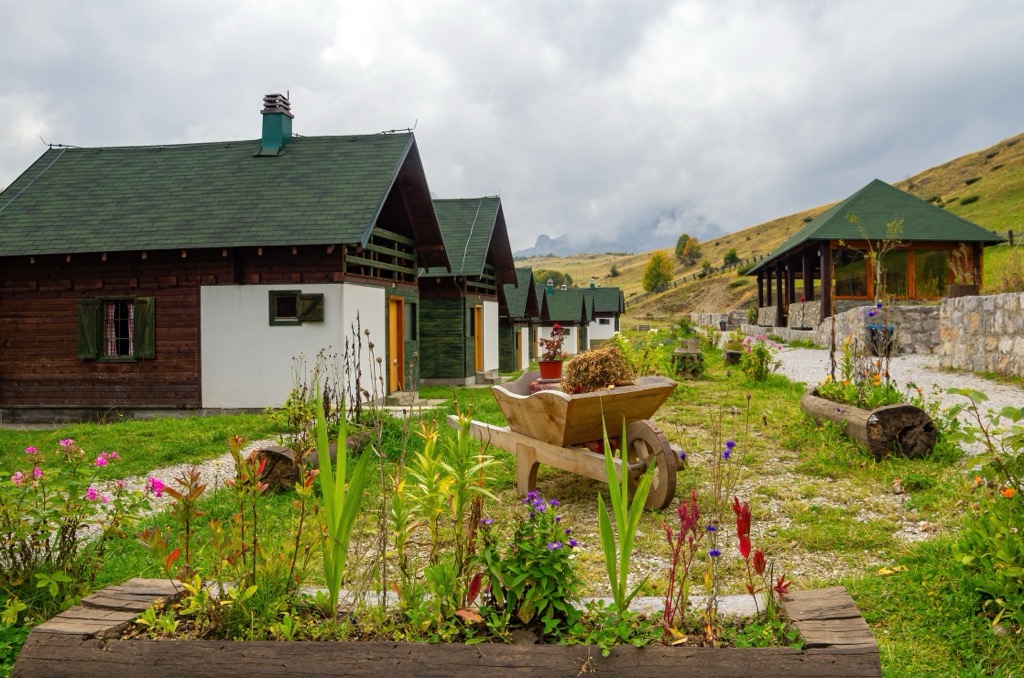
There are a lot of magnificent peaks and routes in the Komovi area, these are the best among them:
The beginning of this tour is in Katun, at the foot of the Komovi. The route then takes you through the fallen stones to Međukomlje valley, lying between two peaks. It continues towards the Koman gate and climbs the ridge to the very top of Kom Kučki. Throughout the ascent, you will be accompanied by a beautiful view of the regional park.
It is necessary to watch out for rock falls due to the large number of visitors to this peak. The climb to Kučki Kom is not very easy, but it is the easiest route in Regional Park Komovi.
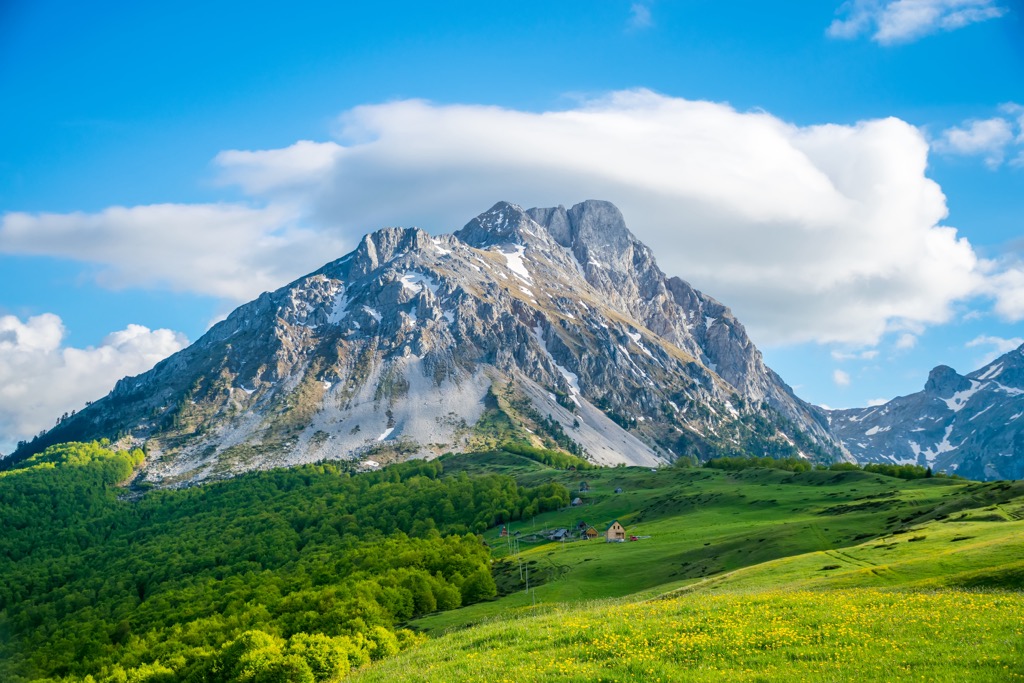
Your hike will start at Ljuban village, and the hike is only 2 km (1.2 mi) long but quite strenuous with 600 m (1,968 ft) of elevation gain. This is an extra easy hike for Regional Nature Park Komovi, but not so popular. The Ljevorečki Kom isn’t so popular due to its accessibility, but a great taste of what these mountains have to offer.
The road to Kom Vasojevički leads via Tršnjevik to the village of Štavna, where the ascent to one of the most beautiful mountains of Komovi begins. The peak is visible the entire way and rises above the spacious pastures of Štavna at 2,461 m (8,074 ft).
The path is well-marked and easy to follow, and the ascent does not require great physical fitness. The beginning of the trail leads over a rockfall where you must be careful. In this part, views of Kom Kučki and Ljevorecki as well as Štavna and Ljuban katuns open up.
The final climb is more demanding and requires extra caution because the trail is exposed. In that part, the view stops at the massive boulder of Kom Vasojevićki. There is a huge meadow under the top, so the approach to the top is safe and spacious.
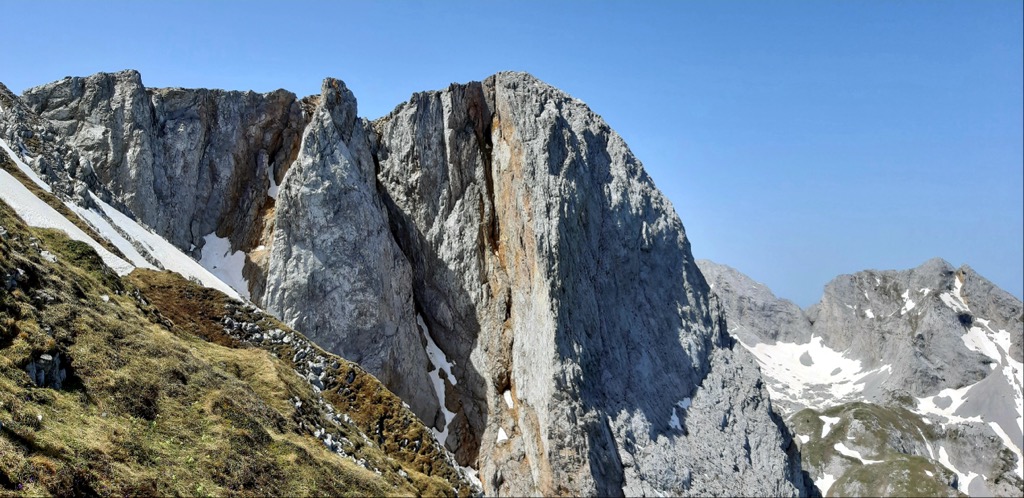
There are two bigger cities near Nature Park Komovi:
Nikšić is the second most popular point in Montenegro. The city is located in the northwest of the country along the River Zeta. It has an altitude of 650 m (2,132 ft) and a population of about 80,000 people
This town, located at the bottom of Trebjesa hill, is thirty kilometers away from the Adriatic Sea. Due to this favorable geographical position, the city of Nikšić has an extremely favorable climate. In addition, Nikšić is considered the industrial center of Montenegro
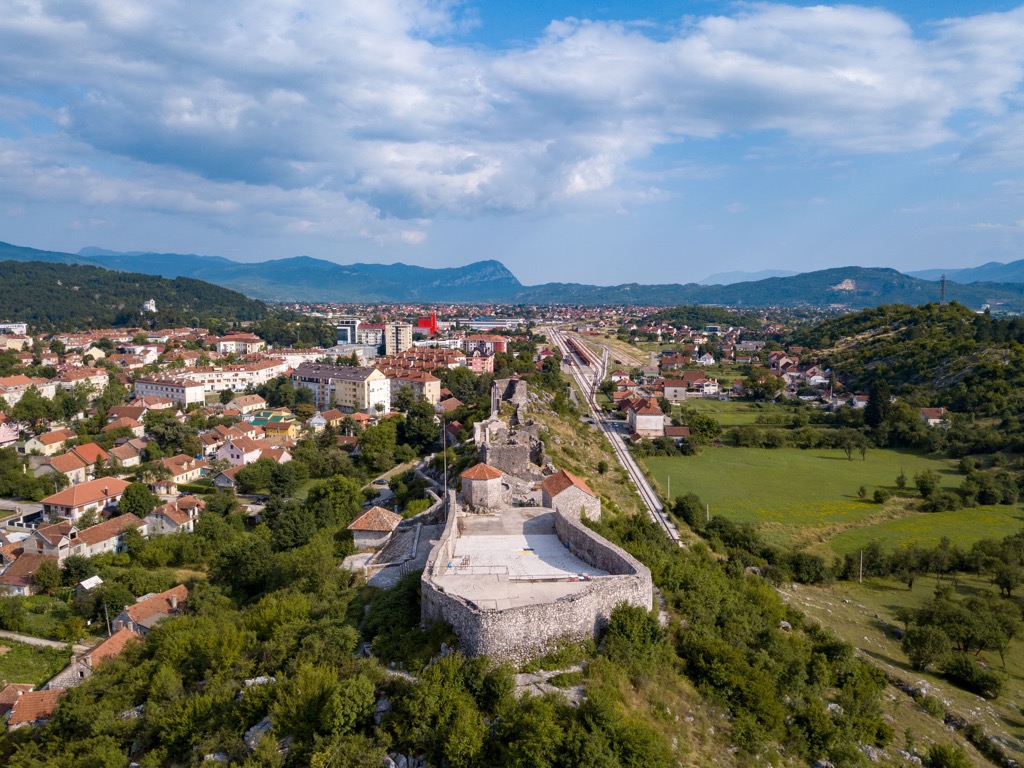
Andrijevica is located in the northeastern part of Montenegro, at the confluence of the Zlorečica and Lim Rivers. This incredibly hilly municipality, which has more than 5,000 residents, is situated at 740 m (2,427 ft) above sea level and is surrounded by Komovi, Bjelasica, and Prokletije massifs.
Whether you are a fan of hiking, cycling, fishing, or extreme sports, you will be able to choose activities for yourself and enjoy numerous and varied hiking trails.
The Turks established Kolašin as a town in the 1sevdnteenth century. At 954 m (3,129 ft) above sea level, Kolasin provides a wonderful holiday both in the winter and the summer.
Kolasin is regarded as an aerial spa because of its elevation and pleasant environment. Lake Biograd is a unique tourist attraction in the Biogradska Gora National Park. Even though it is a small town there are a lot of sights you can visit and accommodation options.
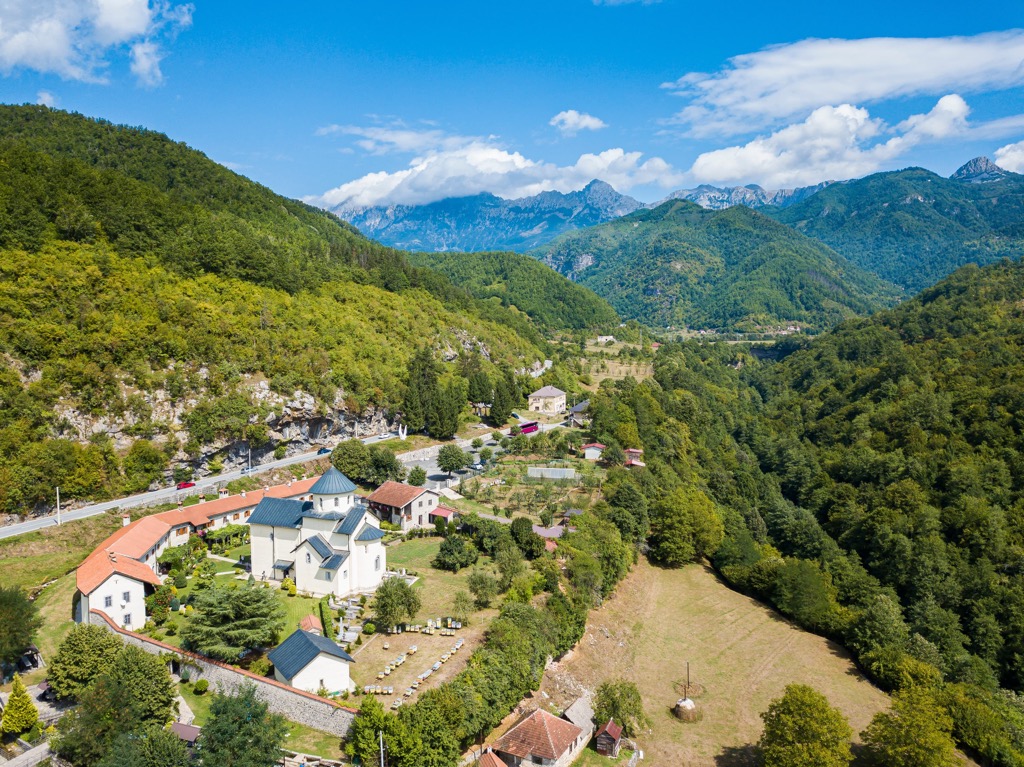
Explore Regional Nature Park Komovi with the PeakVisor 3D Map and identify its summits.







